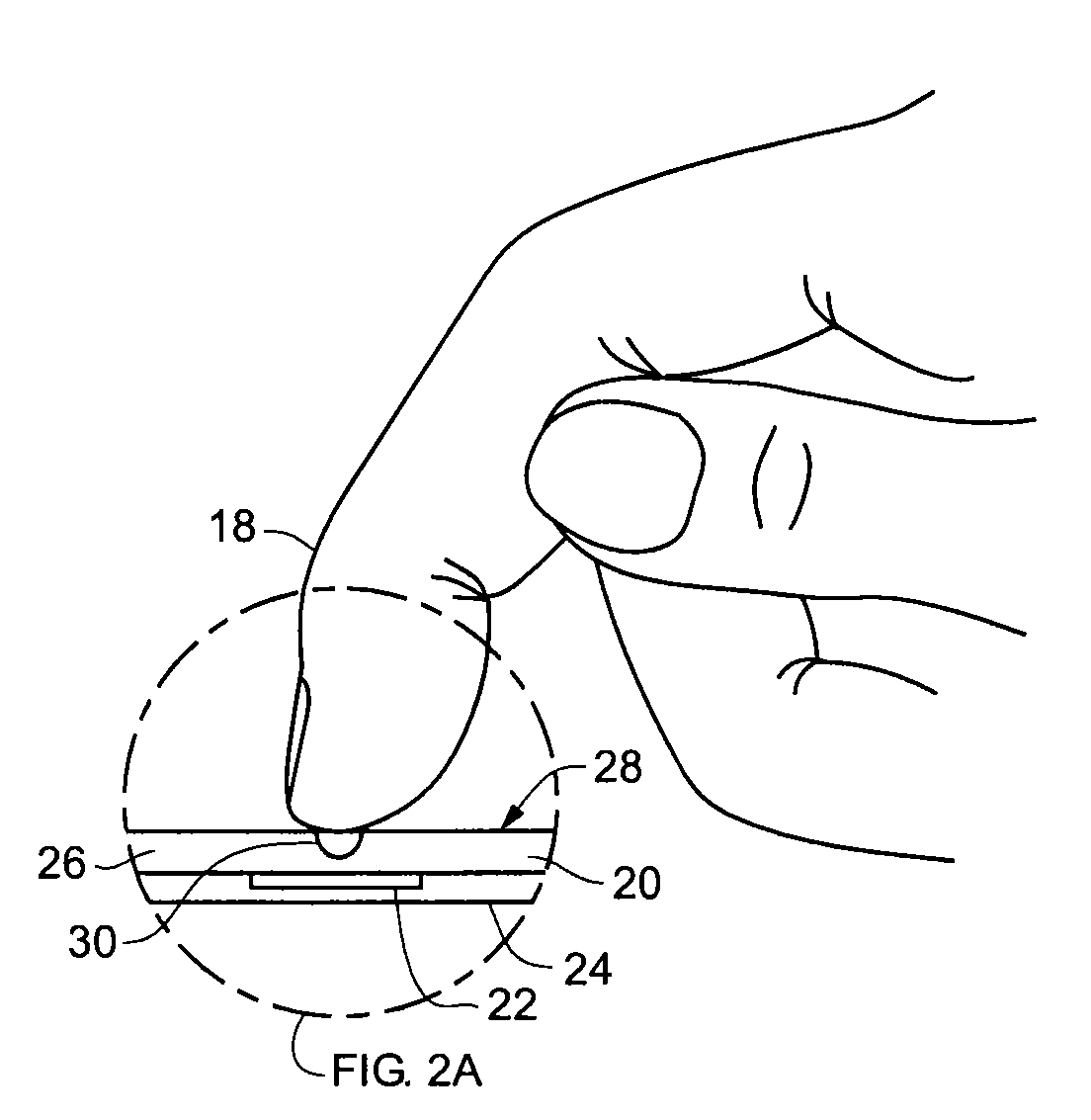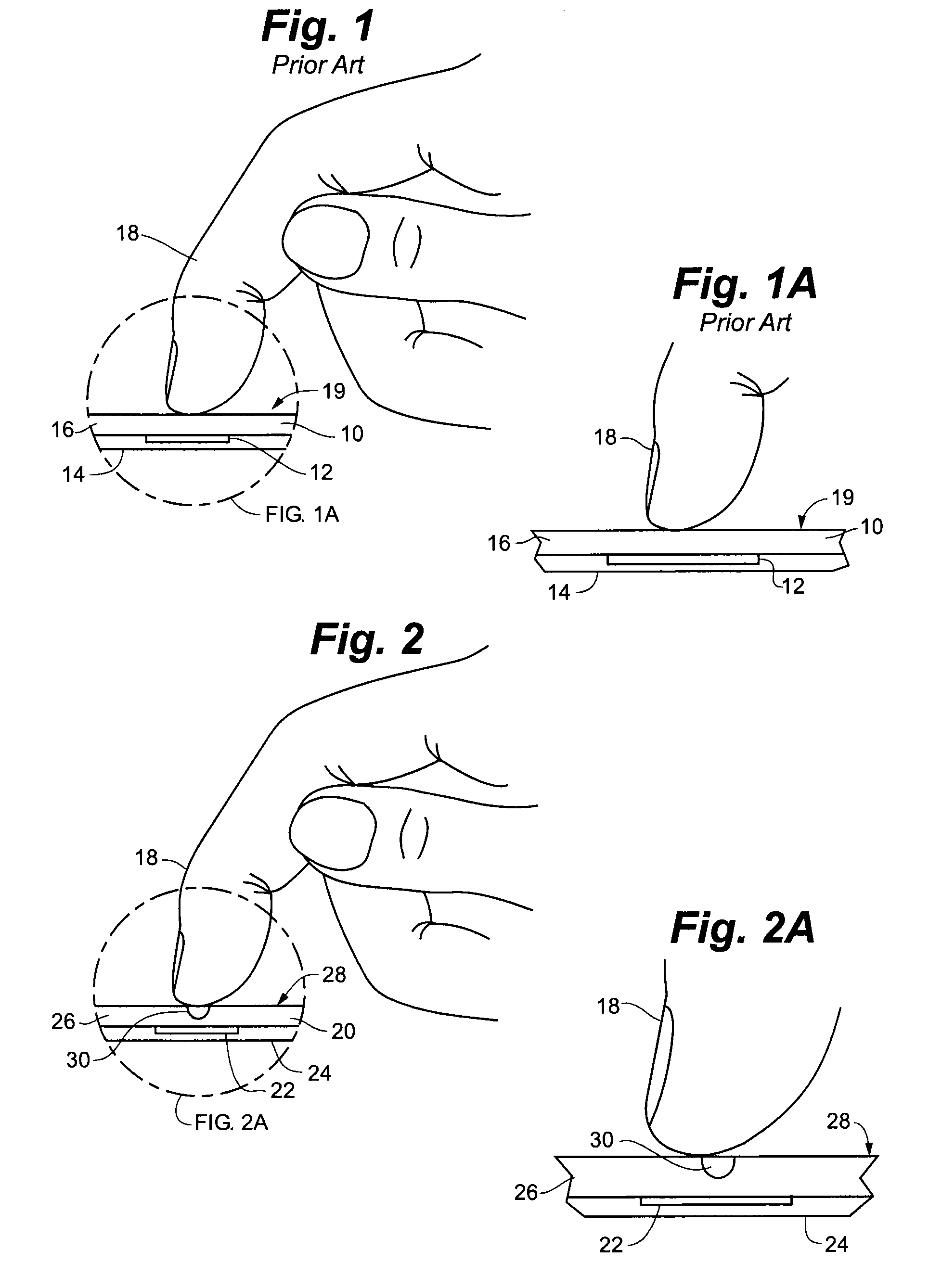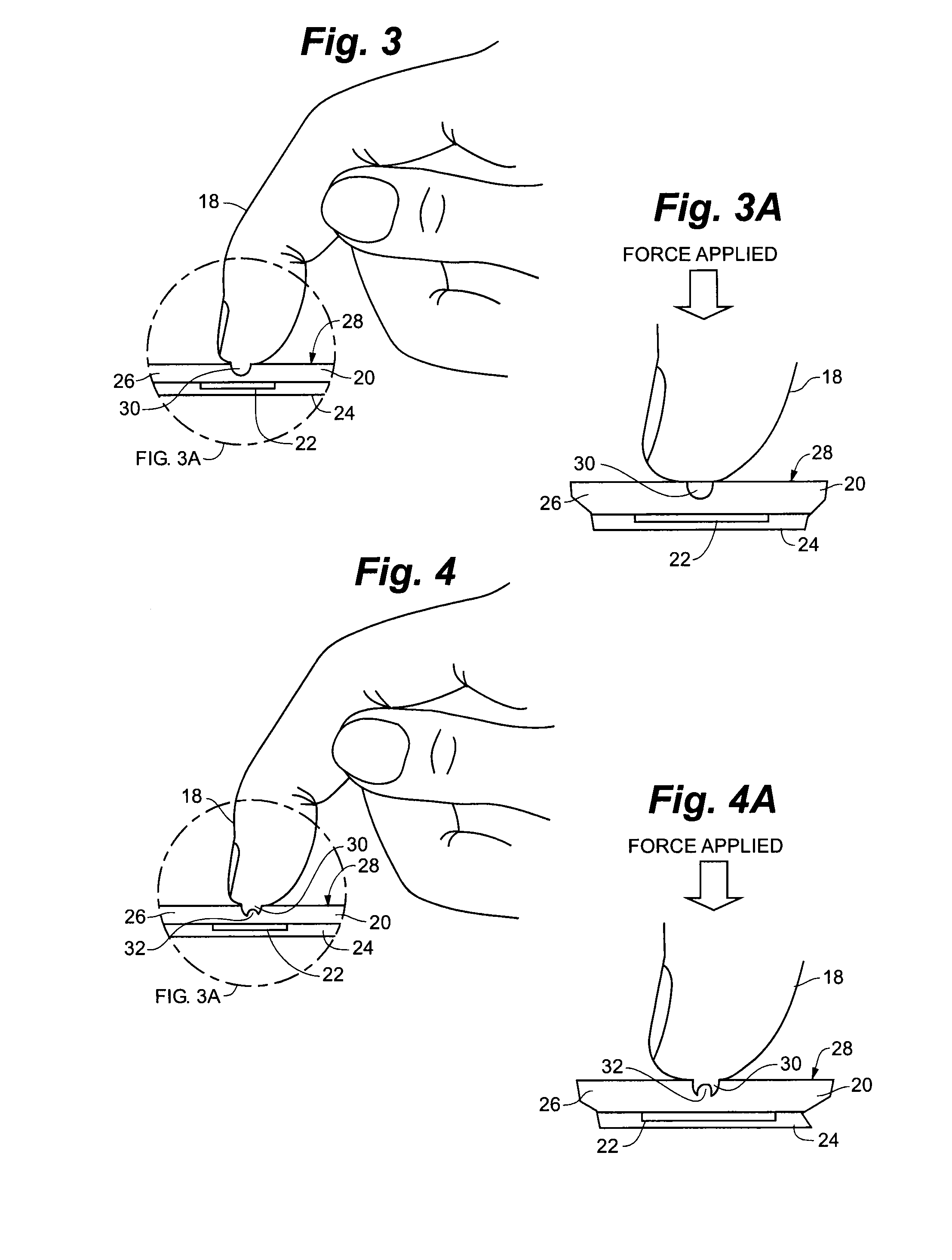Solid state positive force touch sensing
a positive force, solid state technology, applied in the field of control, can solve the problems of difficulty and cost to achieve with mechanical alternatives, unintended actuation risk, and the risk of not detecting an actuation at all
- Summary
- Abstract
- Description
- Claims
- Application Information
AI Technical Summary
Benefits of technology
Problems solved by technology
Method used
Image
Examples
Embodiment Construction
[0032]FIG. 1 depicts a prior art capacitive touch sensor pad 10. Capacitive touch pad 10 generally includes capacitive touch sensor 12 which may be mounted on PC board 14 and overlain with a layer of insulative protective material 16. In this example embodiment, when finger 18, other body part or touching member of a user is placed in sufficient proximity with sensor 12, a capacitive signal is generated by sensor 12 to indicate a control actuation. A drawback of this prior art system is that it is difficult or impossible to adjust the sensitivity of the system to enable a user to place a finger on pad surface 19, as may be sometimes desirable to, for example, permit “touch typing” operation, without causing actuation. Thus, in the prior art resting the fingers on insulative protective material 16 overlying capacitive touch sensor 12 nearly always results in an unintended control actuation.
[0033]FIGS. 2 and 3 depict touch sensor pad 20 according to an example embodiment of the invent...
PUM
 Login to View More
Login to View More Abstract
Description
Claims
Application Information
 Login to View More
Login to View More - R&D
- Intellectual Property
- Life Sciences
- Materials
- Tech Scout
- Unparalleled Data Quality
- Higher Quality Content
- 60% Fewer Hallucinations
Browse by: Latest US Patents, China's latest patents, Technical Efficacy Thesaurus, Application Domain, Technology Topic, Popular Technical Reports.
© 2025 PatSnap. All rights reserved.Legal|Privacy policy|Modern Slavery Act Transparency Statement|Sitemap|About US| Contact US: help@patsnap.com



